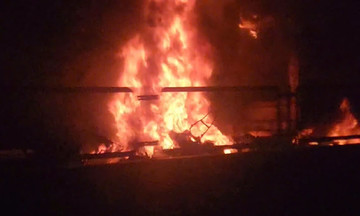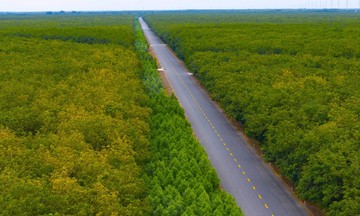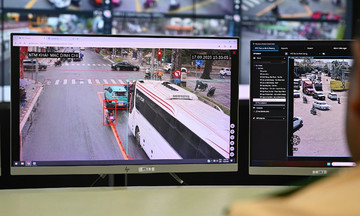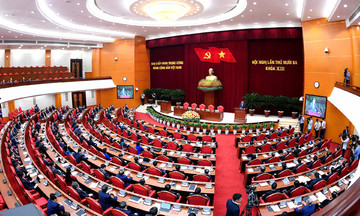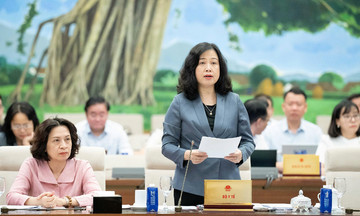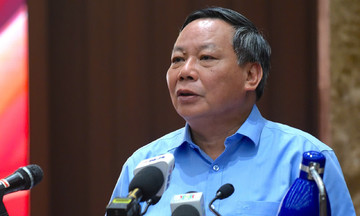Located by the Dong Nai River, opposite the Dong Nai Province People's Committee headquarters, the square is now the intersection of Cach Mang Thang 8 Street and 30 Thang 4 Street. It features a roundabout with a fountain and a statue of a carp transforming into a dragon, made of Bien Hoa ceramics.
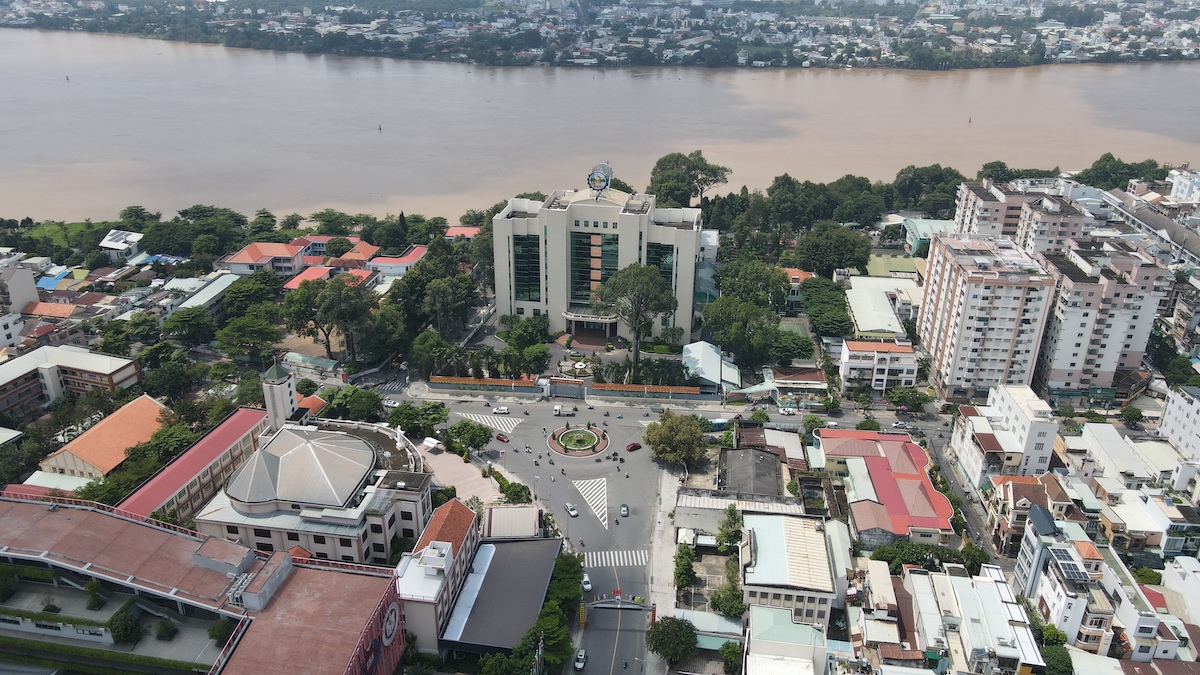 |
Song Pho Square is planned to be extended to the Dong Nai River. Photo: Phuoc Tuan |
Song Pho Square is planned to be extended to the Dong Nai River. Photo: Phuoc Tuan
Historical documents reveal that "Song Pho" refers to the section of the river flowing through old Bien Hoa, from Cau Moi bridge to Cau Ghenh bridge (Cu Lao Pho). In the early 20th century, after occupying Bien Hoa, the French colonialists built numerous administrative offices in this area. Song Pho Square was formed during the same period, alongside the Bien Hoa administrative office and the provincial governor's residence (now the Dong Nai Children's House), creating an urban space by the river.
In August 1945, as the revolutionary wave surged, the ruling apparatus in Bien Hoa was paralyzed. On 25/8, following Saigon's successful seizure of power, the spirits of Bien Hoa residents soared. On the morning of 26/8, Nguyen Van Nghia gathered hundreds of people to surround the administrative office, forcing Provincial Governor Nguyen Van Quy to hand over power. The red flag with a yellow star was raised, marking the victory of the revolution in Bien Hoa.
On the morning of 27/8/1945, over 10,000 people gathered at Song Pho Square for a victory rally. Duong Bach Mai, representing the Nam Ky Regional Party Committee and the Viet Minh Front, delivered a speech declaring that the people of Bien Hoa, along with the entire nation, had escaped colonial rule and achieved independence and freedom.
Hoang Minh Chau, head of the uprising, announced that power was now in the hands of the people and proclaimed the establishment of the Provisional Revolutionary Committee of Bien Hoa Province. At the end of the rally, over 10,000 people took an oath, pledging to sacrifice to protect independence and chanting slogans like "Long live independent Vietnam" and "Long live the Viet Minh." Following the rally, groups of people marched throughout the region, from urban streets to rubber plantations, creating a fervent revolutionary atmosphere.
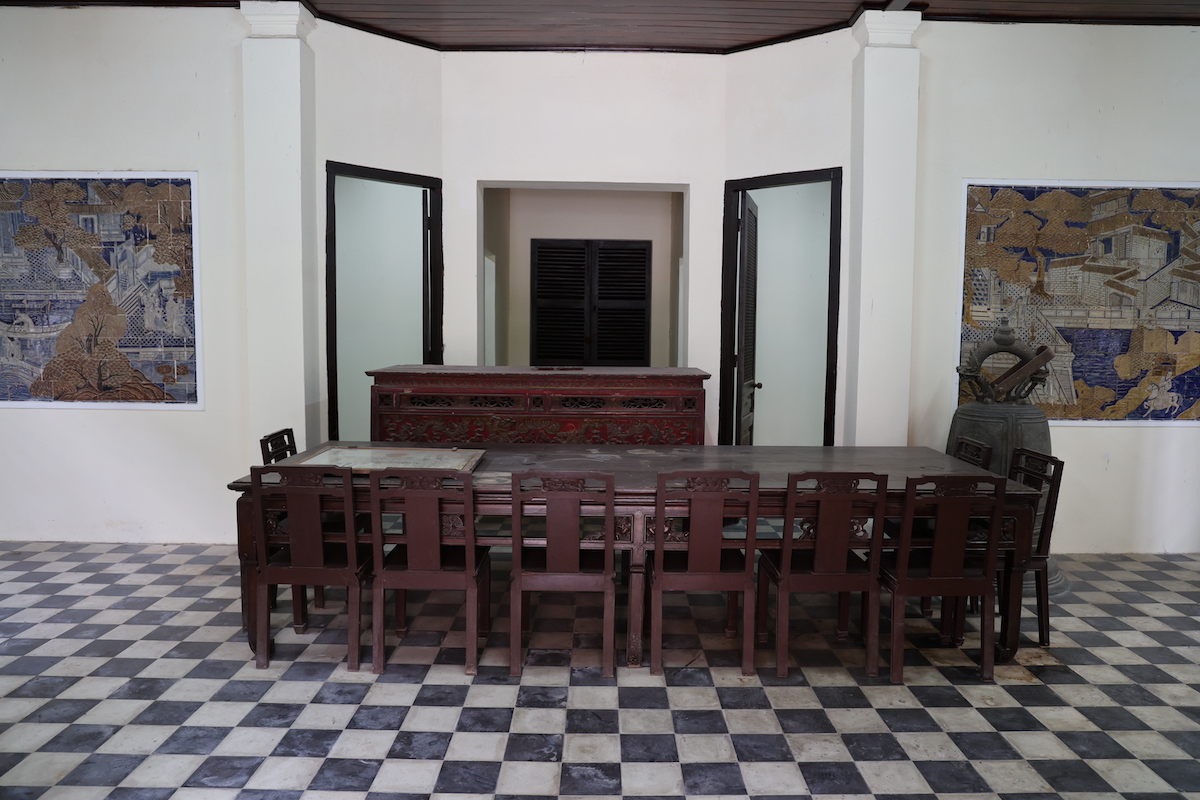 |
Binh Truoc Assembly Hall, where the first Bien Hoa Provincial Party Committee meeting took place. Photo: Phuoc Tuan |
Binh Truoc Assembly Hall, where the first Bien Hoa Provincial Party Committee meeting took place. Photo: Phuoc Tuan
Not far from Song Pho Square is Binh Truoc Assembly Hall, a structure built by the French in 1936. Featuring a square design, solid brick walls, and numerous wood and Bien Hoa ceramic carvings, it once served as the headquarters for local officials. On 23/9/1945, a cadre conference was held here, establishing the first Bien Hoa Provincial Party Committee with the participation of Ha Huy Giap, a representative of the Nam Ky Regional Party Committee. This event marked a crucial step in preparing for the subsequent resistance against the French.
According to Tran Quang Toai, President of the Dong Nai Historical Science Association, both Song Pho Square and Binh Truoc Assembly Hall were recognized as national historical sites in 1991. "These landmarks hold significant meaning in the national liberation revolution in Dong Nai, serving as educational destinations for present and future generations," Toai said.
Along with the Bien Hoa Citadel, Dong Nai province is planning to expand the Song Pho Square historical site. The existing roundabout space will be extended, creating a square axis towards the Dong Nai River. At both ends, there will be landmark structures, connecting the urban landscape and creating a community space.
Upon completion, the square will be integrated with surrounding public facilities to host various activities such as walking, exhibitions, art performances, and local product displays. It will serve as both a cultural space and a historical landmark for Bien Hoa City.
Phuoc Tuan
*This article references material from the book History of Propaganda Work in Bien Hoa - Dong Nai (1930-2020) - Dong Nai Publishing House.



